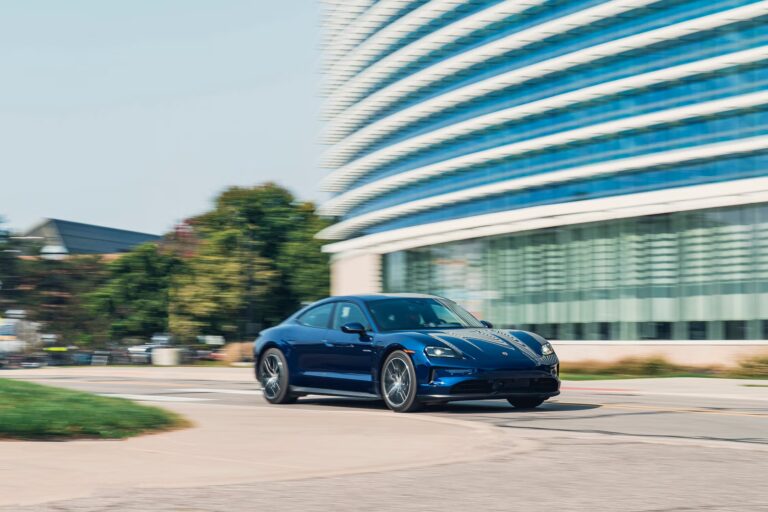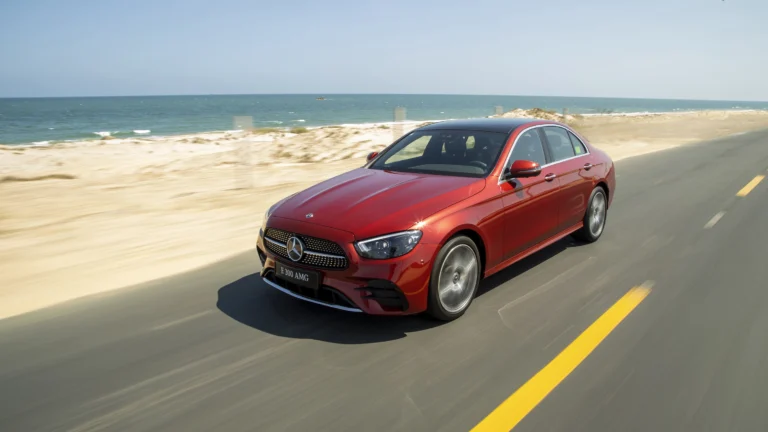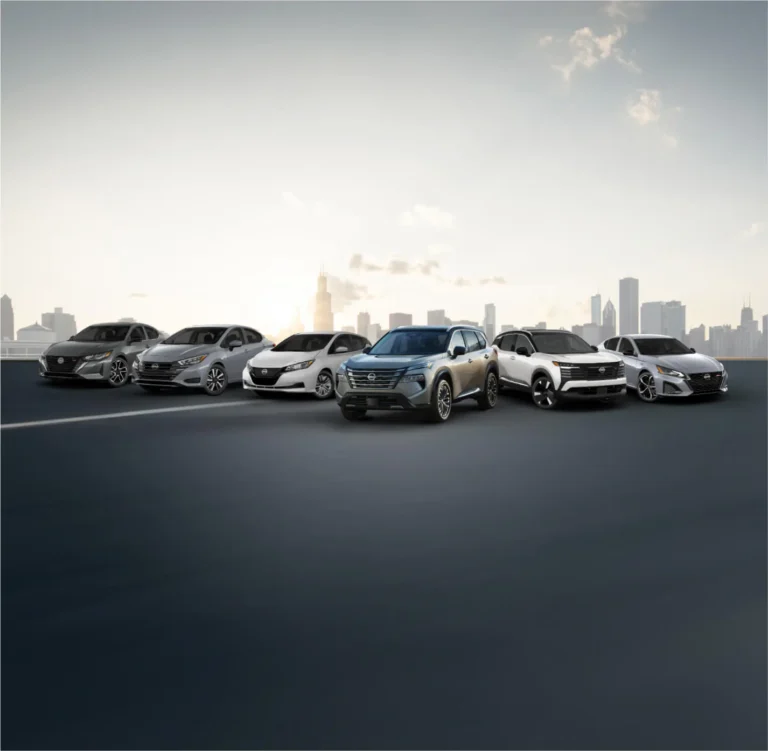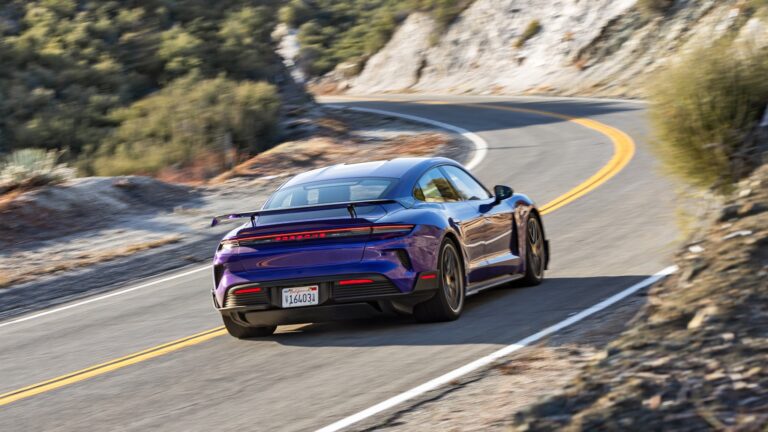Nissan has every intention of finding its way out of the woods, and one of the clearest paths to a profitable exit runs through the U.S. market. With a potential lifeline deal with Honda seemingly on ice, a recent CEO swap, and alarm bells ringing, Nissan’s in bad shape these days.
Nissan needs to generate more revenue and sees the U.S. as a priority, says Guillaume Cartier, Nissan’s chief performance officer. Things are not perfect, and Nissan is not competing in all vehicle segments, or even key ones—it’s missing hybrids in the U.S. and EVs in China.
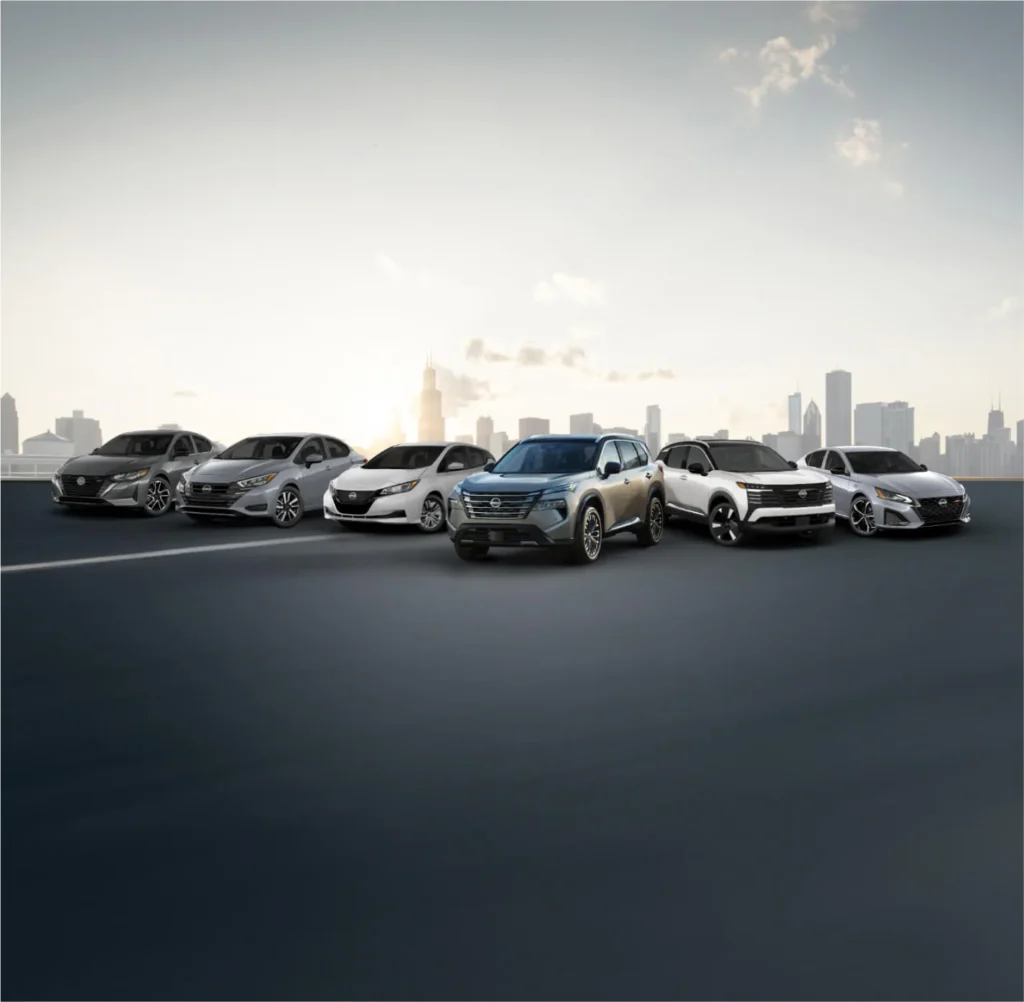
The good news? The U.S. and Canada will see more than 10 new and refreshed products in key segments for both Nissan and Infiniti, including new EVs like the next-generation Nissan Leaf, new EVs from the Canton plant in Mississippi, a Rogue plug-in hybrid, and more. Media from around the world were invited to Nissan’s technical center in Japan for a peek at some of the models in the pipeline and to learn more about Nissan’s future strategy from executives, including Ivan Espinosa, the chief planning officer who will take over as CEO on April 1.
All-New 2026 Nissan Leaf EV
A much-anticipated model, the all-new 2026 Nissan Leaf, will be unveiled in June, joining the Ariya in the Nissan stable of EVs. The third-generation Leaf will go from a boring hatchback to a sleek crossover and move to a new, advanced EV architecture, with greater performance and range, according to executives. We will learn more details in June when the Leaf makes its global debut. For what we’ve gleaned so far, read here.
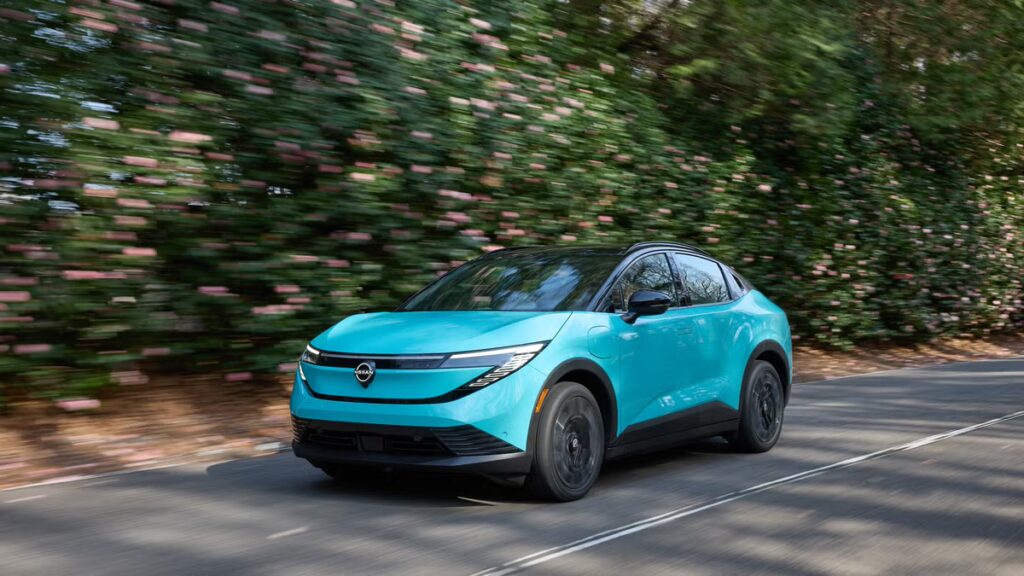
2026 Nissan Sentra
Also soon to be revealed: a new Sentra. Nissan has not totally abandoned the car market. The Maxima may be done, but a new generation of the Sentra compact sedan is coming later this year. We should see it in late summer, and it will go on sale late this year or early 2026. The 2026 Sentra has similar dimensions to the current model but is more refined, with seamless body sides while retaining a bit of muscle-car vibe with a dark-trimmed face and larger wheels on the SR trim level.
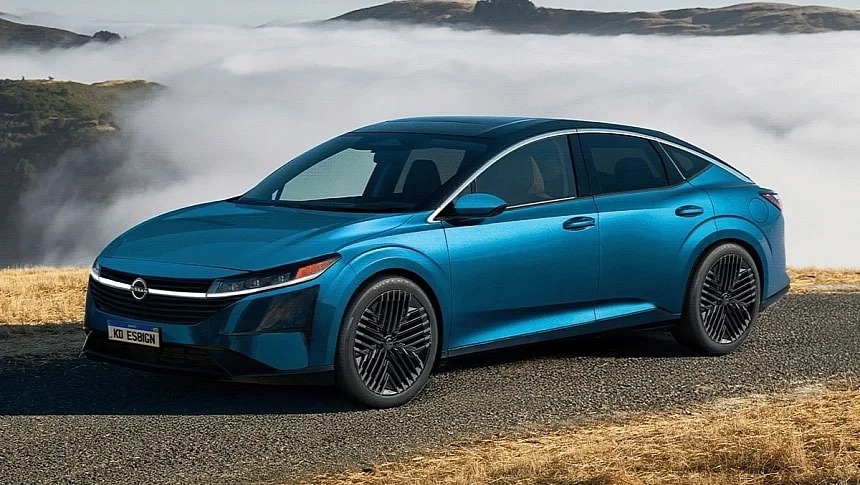
Nissan Pathfinder
Also coming this year: a refreshed Pathfinder SUV with updated tech and connectivity and more premium touches. We continue to hear that a new Frontier midsize pickup truck is in the works, as well as a Z sports car.
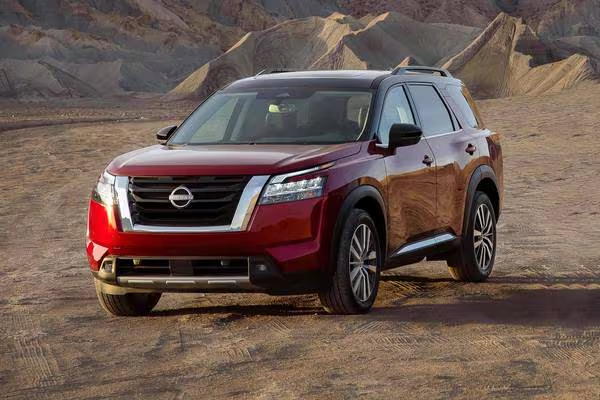
Nissan Rogue Hybrids
One goal is to close the gap on hybrids in the U.S. over the next 24 months. It starts with a Rogue plug-in hybrid this year, using the powertrain found in the otherwise related Mitsubishi Outlander. When the fourth-generation Rogue goes into production in 2026, it will finally bring Nissan’s e-Power hybrid system, which uses a gas engine as a generator in a series hybrid where 100 percent of the power to the wheels is electric. The new Rogue is boxier than before, with a flush grille and no chrome. The look is more chiseled, especially around the rear fender area.
There will be more hybrids to come. Not all models will be electrified, and the type of hybrid will be decided on a case-by-case basis, partially dictated by regulations that are still being sorted out in the U.S.
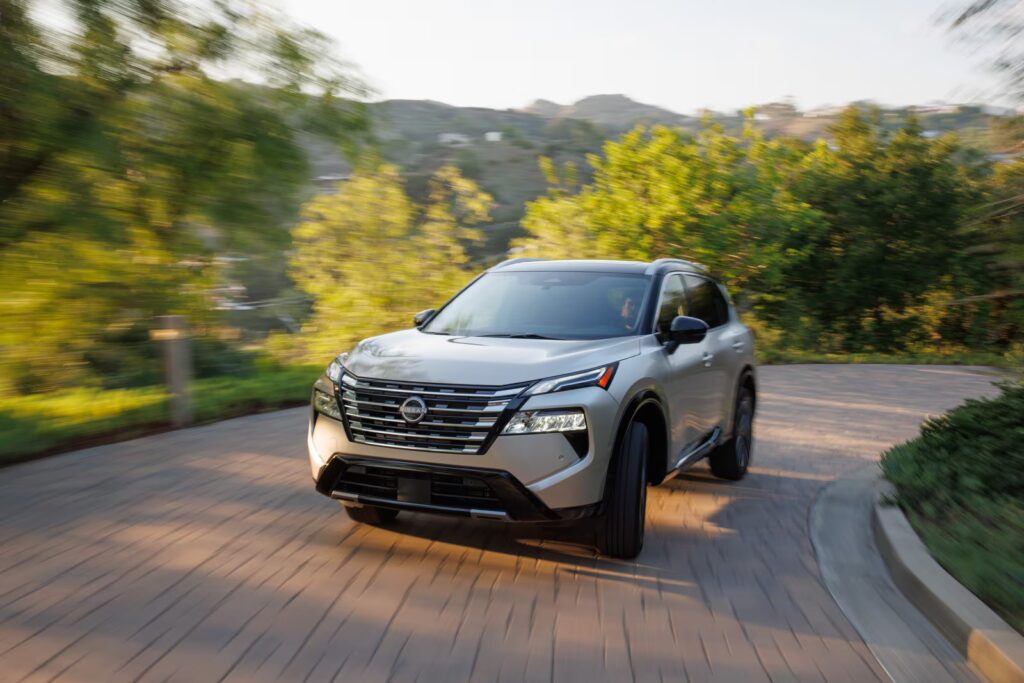
U.S.-Built EVs for Nissan and Infiniti
This one’s huge. The automaker has delayed and reprioritized the electric vehicles to be built at the Canton plant in Mississippi. The current plan is for a pair of electric crossovers in 2027—one for Nissan and one for Infiniti.
Initially, the brands were going to start with electric sedans, but the waning popularity of cars and the continued popularity of SUVs prompted a reversal of the order of the planned launches. The delay also resulted in some design pivots. The industry has come to the realization that EVs don’t have to look like futuristic eggs, and people are rebelling against the design language of EVs, says Ponz Pandikuthira, chief planning officer in North America. They can be styled to meet customer needs, regardless of powertrain.
The result is two very different takes on a crossover for the two brands.
Nissan’s Outdoorsy Electric SUV
The electric SUV for Nissan is a boxy, adventure-oriented utility vehicle designed to stand out in a crowded field. Nissan believes the outdoorsy look is in line with a trend in the U.S., appealing to customers even if they have no intention of ever leaving a paved surface.
The unnamed SUV looks like an electric take on a Nissan Xterra, with a back end similar to a Pathfinder and an integrated roof rack. The new EV has a vertical front to complete the squarish profile. Head of design Alfonso Albaisa would have preferred a shorter wheelbase to better clear hills without seesawing, but the need for batteries dictated a longer wheelbase for range.
Infiniti’s Forthcoming Electric SUV
The unnamed Infiniti electric SUV goes in a completely different direction with a more coupe-like figure. The swoopy crossover has a vertical nose, split lamps, the Infiniti logo on the hood, and an integrated spoiler in the back. It is set to begin production in Canton in 2027, for sale in 2028. It will be the entry-level EV for Infiniti, with the EV family expected to grow from there.
Espinosa, the incoming CEO, says they have decided on names for the two EVs, but they are still a few months from announcing them.
Does Infiniti Have a Future?
“At one point, Lexus was dependent on Toyota for profit, and now [the luxury division] is the profit engine,” says Pandikuthira. “Infiniti has that potential. So, Infiniti is here to stay.” Proof of this is the investment in the new QX80 flagship, which is also adding a Sport package with 24-inch wheels.
The QX60 was also a step in the right direction but should have been hybridized. The next generation of that car will be, he says. It gets a refresh in 2026, with a larger grille and interior updates. There will be a next-generation QX60, and the all-new QX65 two-row midsize crossover coupe is coming next year. Infiniti is already discussing what the next-generation QX80 will look like and what powertrain it will require, including electrification.
Infiniti will not be EV-only, nor will it be SUV-only, Pandikuthira says. The brand is not locked into a particular body style or segment; future models will be tailored to what the brand thinks will appeal to customers of premier vehicles. One thing Infiniti cannot be is warmed-over Nissans. They can share platforms and powertrains, but not design. They can share dealer real estate and service bays, but not showrooms or user experiences. There must be differentiation.
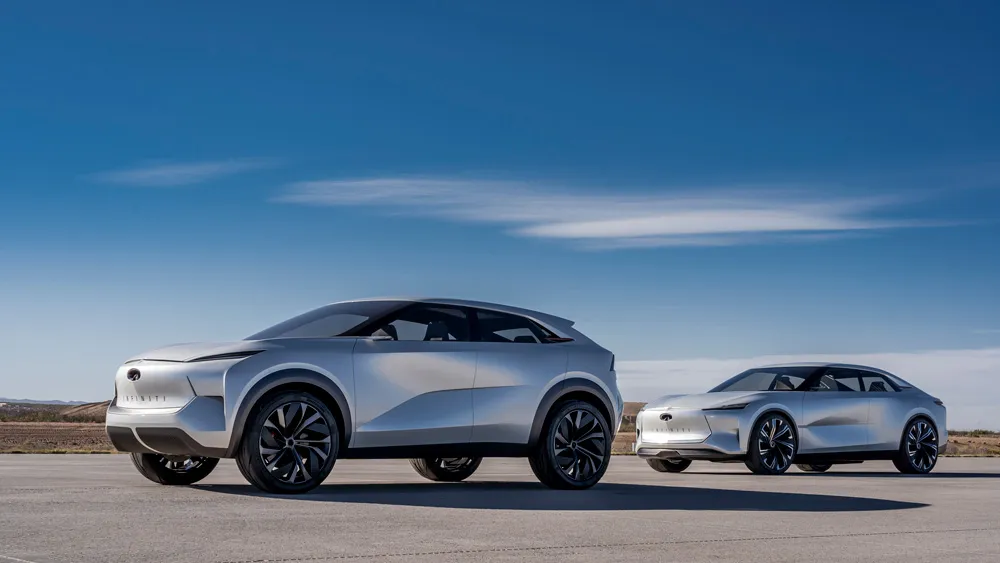
Product Strategy
Under the new leadership of Espinosa, Nissan aims for a mix of signature brand-oriented models, volume models, and niche models.
The new CEO wants five or six brand-oriented vehicles sold globally that are instantly recognizable as Nissan. Then, there will be mainstream models that can be more regional, like small cars for Japan and larger SUVs for North America. There will also be niche, technical cars that will seek a partner to share the cost, saving limited engineering resources for the models with larger volumes and profit margin potential.
Nissan won’t keep investing in new combustion engines per se but will invest in them as generators for range-extender hybrids, for example—things on the pathway to electrification.
